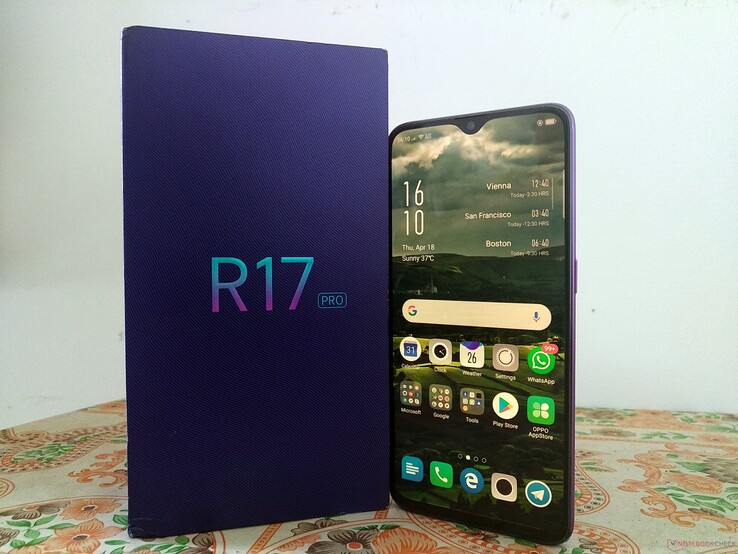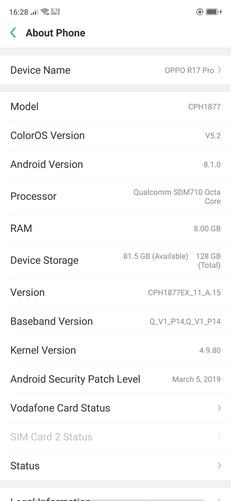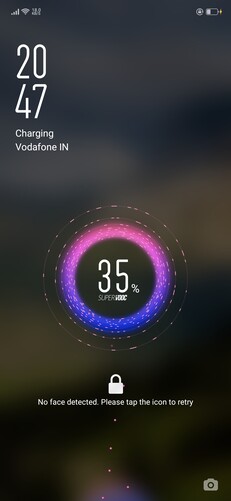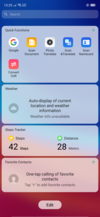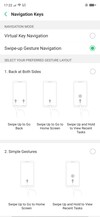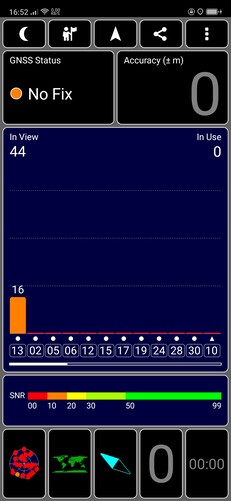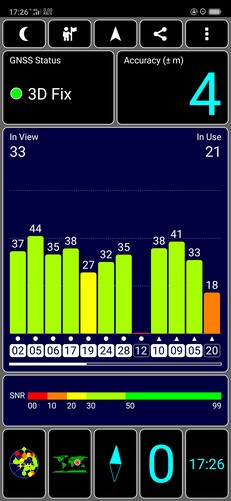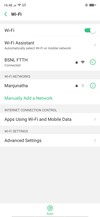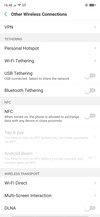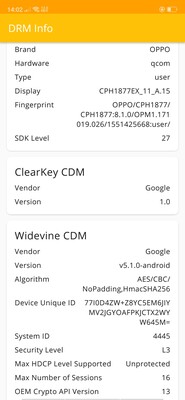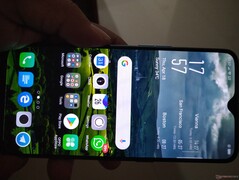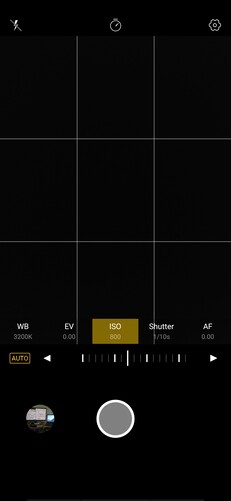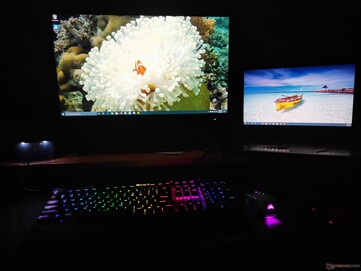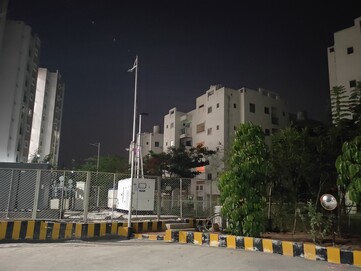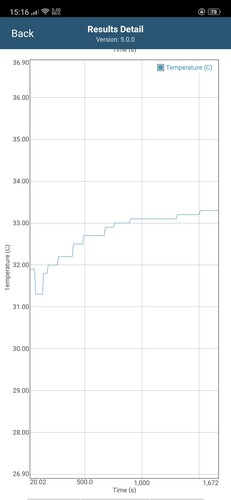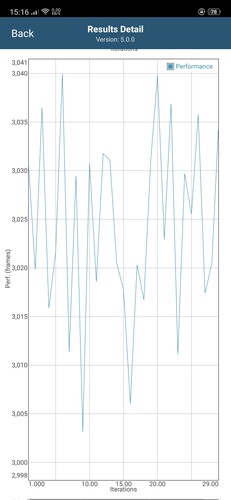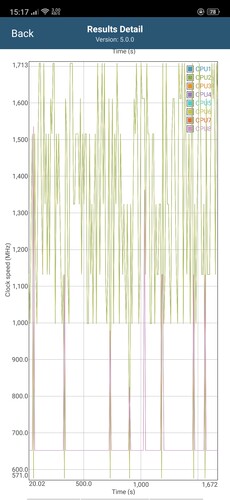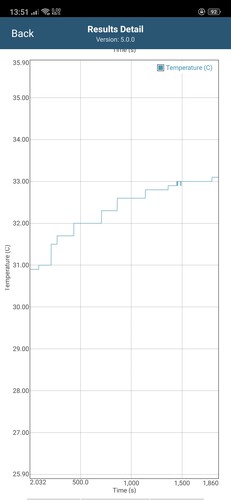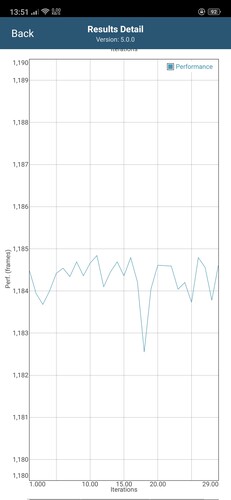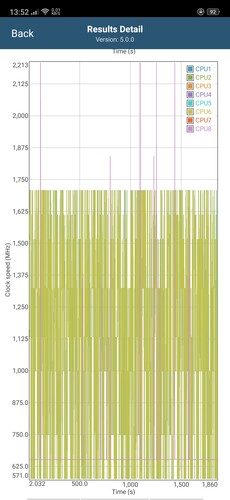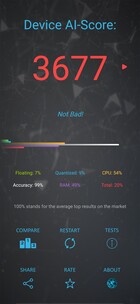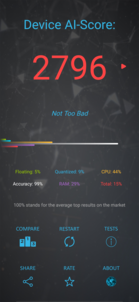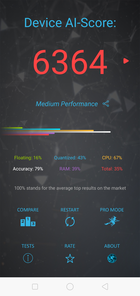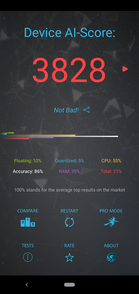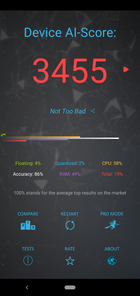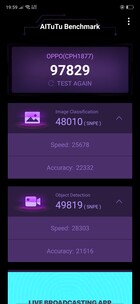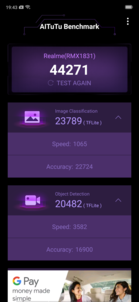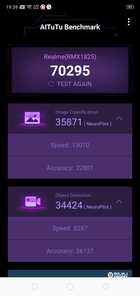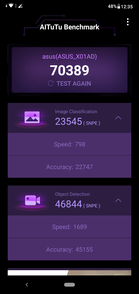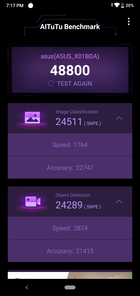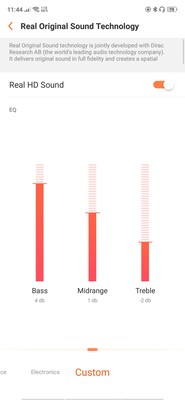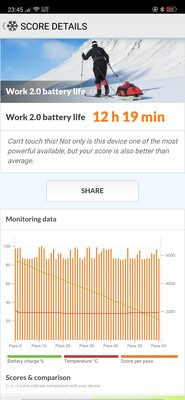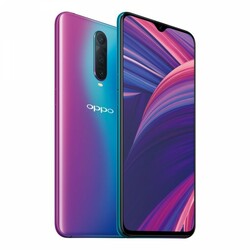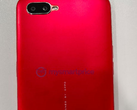Oppo R17 Pro Smartphone Hands-on Review

Oppo has had pretty competitive offerings in the Indian smartphone market managing to garner attention alongside popular phones from Xiaomi, OnePlus, Samsung, and Asus. Recent offerings such as the Oppo K1, F7 Pro, F9 Pro, and F11 Pro have had fairly reasonable outings in the crowded mid-range segment. At the top end of Oppo's lineup, we have the Find X with its mechanized camera slider and a Qualcomm Snapdragon 845 SoC. Between the Snapdragon 845-based Find X and the Helio P70/P60-based offerings, Oppo didn't have a competitive upper mid-range offering. This is where the R17 Pro comes in.
Featuring a Qualcomm Snapdragon 710 SoC, a sleek design with a radiant finish at the back, a 3D ToF sensor, and an in-display fingerprint scanner, the R17 Pro has a lot going for it. The Oppo R17 Pro faces some stiff competition from other Snapdragon 710-powered phones such as the Xiaomi Mi 8 SE, Vivo Nex A, and the Nokia 8.1. Some of these phones cost much less than the R17 Pro, which means Oppo has an uphill task to convince you of giving up your hard-earned money in favor of its smartphone.
Even with the now reduced pricing (₹29,990, ~US$431), the R17 Pro faces immense competition from flagship killers that offer the latest SoCs and more raw power. Amidst all this, can the Oppo R17 Pro still manage to consolidate its position in the market or does it aspire for more than it ought to? Let's find out in our hands-on review.
Note — This is more of an extensive hands-on than the typical smartphone review you are used to seeing on Notebookcheck. We've incorporated most of the performance benchmarks that we think will give a fair performance estimate of the phone. All tests were done on the latest software version CPH1877EX_11_A.16 with Android Security Patch May 5, 2019.
Design
Oppo has given thought to the box packaging as well, which exudes a similar foggy color appearance as the phone itself lending a premium look. Inside the box, we find the R17 Pro itself, a 50 W Super VOOC USB charger, a USB Type-A to Type-C cable, a TPU case, a SIM ejector tool, and the usual paperwork. The phone comes with a pre-applied screen protector. You also get a nice set of USB Type-C earbuds, which is a good thing to have.
The Oppo R17 Pro is sure to turn heads with its design. The aluminum sides combined with a matte glass back exudes a luxurious look. Oppo says that that the texture of the glass prevents fingerprints from spoiling the appearance. While it is true to an extent, it does get greased after extended use. Our review unit is the Radiant Mist variant and the flow of light reflection when light is shone on it at certain angles lends a touch of exquisiteness. At 183 g, the R17 Pro is not the lightest phone out there but users shouldn't face any handling issues.
The back houses a protruding camera housing comprised of 12 MP + 20 MP + 3D ToF sensors with OIS, support for RAW capture, and a host of AI scene recognition modes. Below the camera array is an LED flash. The cameras are excellent but Oppo's sensor choices leave us baffled. We'll come to that shortly. The camera protrusion causes a slight wobble when the phone is placed flat on a desk. There is no physical capacitive fingerprint sensor at the back.
On the left we have just the volume rockers, which are easy to press and give good tactile feedback. Towards the bottom, we have the speaker grill, microphone, USB 3.1 Type-C Gen1 reversible port, and a SIM tray that can take two nano SIMs or a single micro SIM. The SIM tray comes with a seal that should prevent any liquid entry, although the phone itself isn't rated for waterproofing. Going to the right, we have the power button and at the top we have the antenna lines and a noise-canceling microphone.
The 6.4-inch 2340x1080 AMOLED display is one of the highlights of the R17 Po. At the top of the display is a teardrop-shaped notch that houses a 25 MP selfie camera. The ambient light sensor is hidden in the notch. There is no built-in selfie flash and the phone brightens up the display as a faux flash or to provide light for unlocking the phone using facial recognition in the dark. Oppo says that a lot of work has gone into designing the notch in a way that is flush with the screen. The speakerphone is not conspicuous and you'll have to look hard for it as it is neatly sandwiched between the glass and the frame. Given the space constraints of the teardrop notch, Oppo uses an AI algorithm instead of a hardware proximity sensor similar to the Qeexo EarSense in the Find X. The transition from the frame to glass is fairly seamless but there's still room for improvement.
Overall, if design is one of the primary criteria that can influence your buying decision, the Oppo R17 Pro should be high on your list.
Features and Specifications
The Oppo R17 Pro is powered by the new Qualcomm Snapdragon 710 (SD 710) SoC. The 10nm SD 710 is the first of the 700-series and is positioned right in the middle of the flagship 800-series and the mid-range 600-series. There aren't too many phones with the SD 710 yet, and going forward we expect OEMs to embrace the newer SD730 or SD730G as the SoC of choice for upper mid-range smartphones. Still, the performance of the SD710 is nothing to scoff at, and it is pretty responsive for almost whatever you throw at it. The R17 Pro comes with 8 GB RAM and 128 GB UFS 2.1 storage option without microSD expansion. You can use USB drives with the supported OTG function, though.
When it comes to connectivity, the R17 Pro is well-endowed. The SIM tray can take dual nano SIMs with dual standby and VoLTE support for both the SIMs. Wireless connectivity is offered up to 802.11ac along with Bluetooth 5.0, NFC, and GPS. FM radio is not present. The usual set of sensors including compass, ambient light, gyroscope, accelerometer and an in-display fingerprint sensor are available. Face unlock is supported via the front-facing camera but there's no IR camera onboard.
There is a single loudspeaker at the bottom that offers sufficient clarity just below the maximum volume. Similar to the OnePlus 6T, the R17 Pro comes with a 3,700 mAh battery that is implemented in a bi-cell 1850 mAh x 2 configuration. The battery can be topped up insanely fast thanks to Oppo's SuperVOOC fast charging that can top up the battery by 40% in about 10 minutes.
Software
The R17 Pro still runs on ColorOS 5.2 based on Android 8.1 Oreo, and the ColorOS 6 update based on Android 9 Pie update is only scheduled to arrive in August this year. Before we go deeper into the software, let's get this out of the way — ColorOS is chock full of features and functionality that some users, especially those coming from stock Android, might actually find that it takes time to get used to all of them. The OS also includes many apps in the base image that not everyone will find useful. Thankfully, you can uninstall most of them and save some space. Oppo also bundles its own AppStore apart from Google Play, which you can ignore if not required. The Oppo AppStore is not as populated as the Play Store but includes most popular apps. A minor gripe is that you often get two update notifications for most apps — one from the Play Store and another from the AppStore.
Listing out all that ColorOS has to provide begets an entire article in itself so we'll focus on a few important ones. True to its name, ColorOS appears very colorful and eye-catching. It is pretty evident that Oppo has taken a lot of cues from iOS, including the absence of an app drawer. Swiping to the left of the homescreen brings up a fully customizable so-called Smart Assistant that offers quick access to common apps, favorite contacts, weather, step tracking, online orders, and more. It is more of a shortcut page than anything "smart". A swipe down from the top brings up the notification shade with big colorful icons and the brightness slider. A useful and customizable sidebar that offers handy shortcuts for apps and tools such as Screenshot, Screen Recorder, Camera, and File Manager can be invoked by a swipe from the right edge of the display.
In the Settings, apart from the regular ones, we find options to set the Theme, Lockscreen Magazine, and Wallpaper. We liked the image selection offered in the Lockscreen Magazine that helps show off the vibrant colors of the AMOLED panel. ColorOS also offers a slew of privacy protection features and settings to secure financial apps. The device will warn you if any apps fail the security checklist. To top it all, you also get a separate Secure Keyboard whenever password fields are detected. The Secure Keyboard also prevents taking screenshots and screen recording. Prompts for microphone and camera usage by third-party apps also show up in the status bar. Gesture-based navigation is also provided for and is very intuitive to use.
However, not all is well with ColorOS 5.2, at least in our testing. For one, you don't get to see any app icons in the system tray apart from the clock, cellular and Wi-Fi strength, and battery indicator so it is easy to miss notifications unless you actually swipe down the notification center. Also, we found that notifications get delayed sometimes even under good connectivity. A more worrisome observation is that some apps such as Telegram, Discord, Slack, etc. fail to show up notifications unless they've been opened at least once and are running in memory. We hope Oppo addresses this shortcoming in a future update.
Telephony, Networking, and GPS
Call quality on the Oppo R17 Pro is very good and cellular reception was excellent even in areas with supposedly shoddy coverage. Both the SIM slots are VoLTE compatible if your provider supports it. Although there is only one noise-cancelation microphone, it works well to cut out excess background noise. The phone supports wireless AC and could reach the full 50 Mb/s speed offered by the ISP. GPS-A, GLONASS, BDS, and GALILEO are supported.
You have control over the locating mode and can choose either a device-only GPS feature or a high accuracy mode that uses the Internet to more accurately identify the location. We set the option to Device Only to get a fair assessment of the GPS radio's tracking abilities. Indoors, the phone could not secure a proper fix but the signal reception was good outdoors with up to 4 m accuracy. Battery drain while using the GPS was slightly on the higher side, but the phone didn't heat up.
Display
The 6.4-inch FHD+ AMOLED display comes with Corning Gorilla Glass 6 protection. Our unit also came with a screen protector applied as well. With a screen-to-body ratio of 91.5%, the viewing experience is very immersive with punchy colors and deep blacks characteristic of AMOLEDs. Viewing angles are good and the display is very much legible even under direct sunlight, although the brightness levels aren't the highest we've seen.
A major feature of the display is the presence of the optical in-display fingerprint reader. While it is cool to have one, the technology certainly isn't as responsive as a regular capacitive one. It does take a perceivable amount of time to recognize the fingerprint and also fails to register the input sometimes. The animation near the area of the fingerprint is customizable and offers some nice effects but we'd like further fine tuning of the responsiveness of the sensor as much as possible.
There is no option to change color settings apart from a Night Shield mode that helps with blue-light filtration. However, you can force the phone to use the sRGB color space by enabling it in the hidden Developer Options. There is no notification LED and the ambient display shows only the clock, date, battery indicator, and missed calls. Oppo could have actually put the ambient display to good use to show app notifications without having to unlock the phone.
For a device that sports a good display and fairly powerful internals, the Oppo R17 Pro, and by extension other Oppo phones, unfortunately does not feature support for Widevine CDM L1, which means no HD playback of DRM content in Netflix or Amazon Prime.
Cameras
The R17 Pro places a lot of emphasis on the imaging side of things. The Camera app is feature-rich yet simple to use and offers AI scene recognition for up to 23 unique scenes. While the selfie camera uses AI automatically, AI for the rear camera has to be specifically enabled in the Camera Settings. The Camera app features an Expert mode for those who like more control over their shots. The Expert mode offers manual settings for white balance, focus, shutter speed, exposure, and ISO but does not allow changing the aperture, which is fully at the mercy of the phone. There are also some cool stickers and "Omojis" to play with but the reactions of the animated characters are not as smooth as in iOS. You can also apply live filters, set Flash, and toggle HDR along with a new Dazzle Color mode that over-saturates the images to make them look more appealing.
Rear Camera
The Oppo R17 Pro sports an impressive rear camera setup consisting of a 12 MP primary camera with a smart variable aperture that can shift between f/1.5 and f/2.4 depending on the scene. The 12 MP camera uses a Sony IMX362 1/2.55-inch sensor with a large 1.4 micron pixel size and three-axis OIS support. Interestingly, Oppo has decided to use the larger 20 MP sensor for portrait depth sensing. There is also a dedicated 3D ToF sensor that should help with even more accurate depth sensing, but we found that it is not fully utilized in regular photos. However, the ToF sensor is extremely useful in AR applications. The latest OS update included an AR app that uses Google ARCore to take AR measurements. The phone does get considerably warm while using AR applications, though.
Photo quality in daylight is very good with adequate details, rich colors, and good sharpness. The phone does tend to go overboard with the sharpness when using HDR at times so you might want to fiddle around to find the optimal combination for the scene. The AI didn't seem to be of much help apart from identifying the scene. We also noticed a tendency of the camera to brighten up the scene more than required.
The large pixel size helps a lot with night shots and this is where the R17 Pro really shines. Oppo uses a combination of AI and software tricks to reduce noise and enhance colors in low-light scenes. We found that night shots are captured well with minimal noise and color artifacts both indoors and outdoors making the R17 Pro one of the best low-light performers available. You will see some artifacts when fully zoomed in, but for the most part low-light pictures are highly serviceable. Oppo also does HDR well thanks to RAW HDR. While you cannot save in RAW yet, the HDR function directly works on the captured RAW image from the sensor instead of compressing it beforehand. We see that the HDR results are really good for a smartphone of this class.
The R17 Pro can manage video recording in 4K 30 fps and slow motion video at 1080p 240 fps/720p 480 fps. You can choose between Efficient (H.265) and Best Compatibility (H.264) saving options. Video quality is good but there is no option to toggle EIS/OIS so you'll have to be content with shaky videos or use a smartphone mount.
Front Camera
The R17 Pro uses a 25 MP Sony IMX576 sensor with an f/2.0 aperture. The selfie cam also gets a good dose of AI support and a real-time hardware-based Sensor HDR feature that allows for good selfies even with a strong backlight. The AI does a good job of beautifying things albeit it sometimes feels as if the picture is overly smoothened out. Selfies come out well and the portrait effects are prominent. However, we did notice a tendency of the camera to brighten the image more than required.
Performance
The Snapdragon 710 is an able upper mid-range chipset that can offer a near-flagship performance. In regular use, we found absolutely no lags in the interface or any hiccups while playing demanding games. AI functions also seem to be accelerated as we will be seeing shortly. Since ColorOS is a relatively heavier skin, it did have its bearing on the SoC sometimes. But given the copious 8 GB of RAM the stutters were rare to come by. That being said, we feel there's still a lot of room for optimization in ColorOS and we hope things get more refined with ColorOS 6.
CPU and GPU Benchmarks
We evaluated the SoC performance using a variety of synthetic CPU and GPU benchmarks. For comparison, we pitted the Oppo R17 Pro against a few other Snapdragon 710-powered phones and also against the HiSilicon Kirin 710, Snapdragon 660, and Snapdragon 835 SoCs. When it comes to raw CPU scores, the Snapdragon 710 was about 10-15 % better than the Kirin 710 and was within striking distance of the Snapdragon 835. This is noteworthy as the Snapdragon 835 was Qualcomm's flagship just two generations ago. Interestingly, the Snapdragon 660 in the Samsung Galaxy A9 wasn't too far behind the R17 Pro's Snapdragon 710. However, the Snapdragon 660 in the Asus ZenFone Max Pro (M2) did trail by at least 15% as it was clocked lower than normal. So overall, we see that the Snapdragon 710 has good number-crunching abilities comparable to the Snapdragon 835 from a couple of years ago.
GPU tests tell a different story, though. The Adreno 616 in the R17 Pro posted somewhat low scores in most GPU tests. It trails behind the Adreno 540 by a long shot but performs admirably better than the Adreno 512 and the Mali-G51 MP4. We did see some performance penalties compared to other SD 710 phones, so there's a likelihood of Oppo's software being at fault here.
| GFXBench (DX / GLBenchmark) 2.7 | |
| T-Rex Onscreen | |
| Average of class Smartphone (12 - 166, n=155, last 2 years) | |
| Sony Xperia XZ | |
| Qualcomm QRD SD835 5.5-inch reference smartphone | |
| OnePlus 5T | |
| Nokia 8 Sirocco | |
| Average Qualcomm Snapdragon 710, Qualcomm Adreno 616 (54 - 65, n=6) | |
| Nokia 8.1 | |
| Meizu X8 | |
| Lenovo Z5 Pro | |
| Oppo R17 Pro | |
| Samsung Galaxy A9 2018 | |
| Asus Zenfone Max Pro M2 ZB630KL | |
| Huawei P Smart Z 2019 | |
| Huawei P30 Lite | |
| 1920x1080 T-Rex Offscreen | |
| Average of class Smartphone (22 - 954, n=155, last 2 years) | |
| Qualcomm QRD SD835 5.5-inch reference smartphone | |
| OnePlus 5T | |
| Nokia 8 Sirocco | |
| Sony Xperia XZ | |
| Oppo R17 Pro | |
| Lenovo Z5 Pro | |
| Nokia 8.1 | |
| Meizu X8 | |
| Average Qualcomm Snapdragon 710, Qualcomm Adreno 616 (56 - 65, n=6) | |
| Samsung Galaxy A9 2018 | |
| Asus Zenfone Max Pro M2 ZB630KL | |
| Huawei P Smart Z 2019 | |
| Huawei P30 Lite | |
| GFXBench 3.0 | |
| on screen Manhattan Onscreen OGL | |
| Average of class Smartphone (18 - 166, n=157, last 2 years) | |
| OnePlus 5T | |
| Qualcomm QRD SD835 5.5-inch reference smartphone | |
| Sony Xperia XZ | |
| Nokia 8 Sirocco | |
| Nokia 8.1 | |
| Meizu X8 | |
| Average Qualcomm Snapdragon 710, Qualcomm Adreno 616 (20 - 40, n=6) | |
| Lenovo Z5 Pro | |
| Oppo R17 Pro | |
| Samsung Galaxy A9 2018 | |
| Asus Zenfone Max Pro M2 ZB630KL | |
| Huawei P Smart Z 2019 | |
| Huawei P30 Lite | |
| 1920x1080 1080p Manhattan Offscreen | |
| Average of class Smartphone (12 - 606, n=156, last 2 years) | |
| Qualcomm QRD SD835 5.5-inch reference smartphone | |
| OnePlus 5T | |
| Nokia 8 Sirocco | |
| Sony Xperia XZ | |
| Oppo R17 Pro | |
| Meizu X8 | |
| Average Qualcomm Snapdragon 710, Qualcomm Adreno 616 (32 - 33, n=6) | |
| Lenovo Z5 Pro | |
| Nokia 8.1 | |
| Samsung Galaxy A9 2018 | |
| Huawei P Smart Z 2019 | |
| Asus Zenfone Max Pro M2 ZB630KL | |
| Huawei P30 Lite | |
| GFXBench 3.1 | |
| on screen Manhattan ES 3.1 Onscreen | |
| Average of class Smartphone (11 - 166, n=157, last 2 years) | |
| OnePlus 5T | |
| Sony Xperia XZ | |
| Nokia 8 Sirocco | |
| Average Qualcomm Snapdragon 710, Qualcomm Adreno 616 (19 - 30, n=6) | |
| Qualcomm QRD SD835 5.5-inch reference smartphone | |
| Nokia 8.1 | |
| Meizu X8 | |
| Lenovo Z5 Pro | |
| Oppo R17 Pro | |
| Samsung Galaxy A9 2018 | |
| Asus Zenfone Max Pro M2 ZB630KL | |
| Huawei P Smart Z 2019 | |
| Huawei P30 Lite | |
| 1920x1080 Manhattan ES 3.1 Offscreen | |
| Average of class Smartphone (8.4 - 413, n=156, last 2 years) | |
| Qualcomm QRD SD835 5.5-inch reference smartphone | |
| OnePlus 5T | |
| Nokia 8 Sirocco | |
| Sony Xperia XZ | |
| Oppo R17 Pro | |
| Lenovo Z5 Pro | |
| Nokia 8.1 | |
| Meizu X8 | |
| Average Qualcomm Snapdragon 710, Qualcomm Adreno 616 (23 - 23, n=6) | |
| Samsung Galaxy A9 2018 | |
| Huawei P Smart Z 2019 | |
| Asus Zenfone Max Pro M2 ZB630KL | |
| Huawei P30 Lite | |
We also wanted to evaluate how the Snapdragon 710 performs under sustained load. We ran GFXBench Long Term T-Rex ES 2.0 and Long Term Manhattan ES 3.1 for about 30 iterations. Temperatures hovered around a reasonable 33 °C during both runs. In Long Term T-Rex ES 2.0, we find intermittent drops in performance but the SoC was able to recover quickly. For some reason, it could not manage to sustain well and the maximum clock speed attained was 1.71 GHz.
In the more strenuous Long Term Manhattan ES 3.1 test, the only major performance drop was seen after 18 iterations and the SoC could sustain well for the most part. CPU clocks were mostly in the 1.7 GHz range with occasional boosts to 2.2 GHz. Overall, throttling didn't seem to be a major issue with the Snapdragon 710 and the phone also does a good job of keeping the thermals under check.
Web Benchmarks
Oppo offers no less than three browsers in the default ROM — Oppo Browser, UC Browser, and Google Chrome. Depending on how you configure them, both Oppo and UC Browsers can nag you to no end with notifications of unimportant news and rumors. We recommend using Google Chrome or Microsoft Edge for a much better and safer browsing experience. For our testing, we used the latest version of Google Chrome. We found that the R17 Pro scored much below even its contemporary SD 710 phones in all browser benchmarks and only marginally better than the SD 660 phones in some tests.
Regular browsing should pose no issues, though. With ample RAM available, you can have tabs open by the dozen and still have a responsive browsing experience. Streaming FHD or even 1440p videos was very smooth. We also played a game of Interland in the Chrome browser and didn't have issues with fluidity or touch responsiveness in the game.
| JetStream 1.1 - Total Score | |
| Qualcomm QRD SD835 5.5-inch reference smartphone | |
| OnePlus 5T (Chrome 63) | |
| Lenovo Z5 Pro (Chrome 72) | |
| Nokia 8.1 (Chrome 71) | |
| Meizu X8 (Chrome 72) | |
| Nokia 8 Sirocco (Chrome 66) | |
| Average Qualcomm Snapdragon 710, Qualcomm Adreno 616 (50.5 - 66.6, n=6) | |
| Huawei P30 Lite (Chrome 74) | |
| Sony Xperia XZ (Chrome 52) | |
| Samsung Galaxy A9 2018 (Chrome 70) | |
| Oppo R17 Pro (Chrome 73) | |
| Asus Zenfone Max Pro M2 ZB630KL (Chrome 71) | |
| Jetstream 2 - 2.0 Total Score | |
| Average of class Smartphone (23.8 - 387, n=150, last 2 years) | |
| OnePlus 5T (Chrome 74) | |
| Average Qualcomm Snapdragon 710, Qualcomm Adreno 616 (29 - 38.5, n=3) | |
| Huawei P Smart Z 2019 (Chrome 74) | |
| Huawei P30 Lite (Chrome 74) | |
| Oppo R17 Pro (Chrome 73) | |
| Octane V2 - Total Score | |
| Average of class Smartphone (2228 - 121337, n=198, last 2 years) | |
| Qualcomm QRD SD835 5.5-inch reference smartphone (Chrome 56) | |
| Meizu X8 (Chrome 72) | |
| Nokia 8.1 (Chrome 71) | |
| OnePlus 5T (Chrome 63) | |
| Lenovo Z5 Pro (Chrome 72) | |
| Average Qualcomm Snapdragon 710, Qualcomm Adreno 616 (9771 - 12802, n=6) | |
| Nokia 8 Sirocco (Chrome 66) | |
| Oppo R17 Pro (Chrome 73) | |
| Huawei P Smart Z 2019 (Chrome 74) | |
| Samsung Galaxy A9 2018 (Chrome 70) | |
| Huawei P30 Lite (Chrome 74) | |
| Sony Xperia XZ (Chrome 52) | |
| Asus Zenfone Max Pro M2 ZB630KL (Chrome 71) | |
| Mozilla Kraken 1.1 - Total | |
| Nokia 8 Sirocco (Chrome 66) | |
| Asus Zenfone Max Pro M2 ZB630KL (Chrome 71) | |
| Huawei P30 Lite (Chrome 74) | |
| Huawei P Smart Z 2019 (Chrome 74) | |
| Samsung Galaxy A9 2018 (Chrome 70) | |
| Oppo R17 Pro (Chrome 73) | |
| Average Qualcomm Snapdragon 710, Qualcomm Adreno 616 (3035 - 3800, n=6) | |
| Lenovo Z5 Pro (Chrome 72) | |
| OnePlus 5T (Chrome 63) | |
| Meizu X8 (Chrome 72) | |
| Nokia 8.1 (Chrome 71) | |
| Sony Xperia XZ (Chrome 52) | |
| Qualcomm QRD SD835 5.5-inch reference smartphone | |
| Average of class Smartphone (257 - 28190, n=154, last 2 years) | |
| WebXPRT 2015 - Overall | |
| Nokia 8.1 (Chrome 71) | |
| Nokia 8 Sirocco (Chrome 66) | |
| Lenovo Z5 Pro (Chrome 72) | |
| Meizu X8 (Chrome 72) | |
| Asus Zenfone Max Pro M2 ZB630KL (Chrome 71) | |
| OnePlus 5T (Chrome 63) | |
| Oppo R17 Pro (Chrome 73) | |
| Samsung Galaxy A9 2018 (Chrome 70) | |
| Average Qualcomm Snapdragon 710, Qualcomm Adreno 616 (166 - 209, n=6) | |
| Qualcomm QRD SD835 5.5-inch reference smartphone | |
| Sony Xperia XZ (Chrome 52) | |
| WebXPRT 3 - Overall | |
| Average of class Smartphone (38 - 380, n=32, last 2 years) | |
| Nokia 8 Sirocco (Chrome 66) | |
| Nokia 8.1 (Chrome 71) | |
| Lenovo Z5 Pro (Chrome 72) | |
| Meizu X8 (Chrome 72) | |
| Average Qualcomm Snapdragon 710, Qualcomm Adreno 616 (57 - 72, n=6) | |
| Huawei P30 Lite (Chrome 74) | |
| Samsung Galaxy A9 2018 (Chrome 70) | |
| Oppo R17 Pro | |
* ... smaller is better
Storage Benchmarks
The Oppo R17 Pro uses UFS 2.1 storage for high read and write speeds. We find that Random Writes are on par with other UFS 2.1 devices such as the Samsung Galaxy A9, Nokia 8 Sirocco, and the OnePlus 5T. Random Reads were somewhat slower than the above phones but still better than devices with eMMC storage. Sequential writes and reads were good, although we do find that other UFS 2.1 phones had significantly higher sequential write speeds. Nevertheless, the differences are not readily perceivable in daily usage and the relatively faster storage helps with improved game load times and app launches.
| Oppo R17 Pro Adreno 616, SD 710, 128 GB UFS 2.1 Flash | Huawei P Smart Z 2019 Mali-G51 MP4, Kirin 710, 64 GB eMMC Flash | Meizu X8 Adreno 616, SD 710, 64 GB eMMC Flash | Huawei P30 Lite Mali-G51 MP4, Kirin 710, 128 GB eMMC Flash | Nokia 8.1 Adreno 616, SD 710, 64 GB eMMC Flash | Lenovo Z5 Pro Adreno 616, SD 710, 128 GB eMMC Flash | Asus Zenfone Max Pro M2 ZB630KL Adreno 512, SD 660, 64 GB eMMC Flash | Samsung Galaxy A9 2018 Adreno 512, SD 660, 128 GB UFS 2.1 Flash | Nokia 8 Sirocco Adreno 540, SD 835, 128 GB UFS 2.1 Flash | OnePlus 5T Adreno 540, SD 835, 128 GB UFS 2.1 Flash | Sony Xperia XZ Adreno 530, 820 MSM8996, 32 GB eMMC Flash | |
|---|---|---|---|---|---|---|---|---|---|---|---|
| AndroBench 3-5 | 57% | -19% | 57% | -34% | -24% | 64% | -1% | 26% | 20% | -38% | |
| Random Write 4KB (MB/s) | 20.98 | 78 272% | 16.46 -22% | 87.3 316% | 7.3 -65% | 14.76 -30% | 88.2 320% | 19.79 -6% | 22.4 7% | 20 -5% | 10.5 -50% |
| Random Read 4KB (MB/s) | 102.4 | 94.1 -8% | 82 -20% | 71.6 -30% | 69.9 -32% | 77.4 -24% | 74.9 -27% | 116.8 14% | 140.7 37% | 138.1 35% | 71.5 -30% |
| Sequential Write 256KB (MB/s) | 191.6 | 191.8 0% | 203.1 6% | 158.6 -17% | 203.8 6% | 190.8 0% | 198.9 4% | 194.6 2% | 211.6 10% | 203.4 6% | 138 -28% |
| Sequential Read 256KB (MB/s) | 489.9 | 304.3 -38% | 293.5 -40% | 293.2 -40% | 279.3 -43% | 284.5 -42% | 285.5 -42% | 426.6 -13% | 738 51% | 699 43% | 281 -43% |
AI Benchmarks
As detailed in our Realme U1 review, AI benchmark scores depend on many variables and a low score doesn't really indicate that the SoC itself lacks AI capabilities. A lot depends on the software and how OEMs expose the AI SDKs as well. That being said, we ran AI Benchmark and AITuTu to get a relative idea of the Snapdragon 710's AI performance in comparison with some of the other SoCs we have with us for testing, including the MediaTek Helio P70, Snapdragon 632, and the Snapdragon 660.
We find that the Oppo R17 Pro indeed tries to do a good job with AI but is held back by the software. In AI Benchmark, the R17 Pro scored 3677 points while the Android 9-based Realme 3 scored 6364. Android 9 has better AI support than Android 8.1 so we expect the R17 Pro to also show equivalent or even better performance once ColorOS 6 based on Android 9 arrives for the handset later this year.
In AITuTu, we see that the R17 Pro led the charts by a long mile despite being on Android 8.1. However, we also find the Android 9 phones such as the Realme 3 and the Asus ZenFone Max (M2) offer equivalent performance for their SoCs' worth. Again, an update to Android 9 should help propel the R17 Pro's scores even further. During running the benchmark itself, we found that the Snapdragon 710 was able to easily perform all AI recognition functions and object tracking without breaking a sweat.
Gaming
Gaming on the Oppo R17 Pro is a pleasure thanks to the fast chipset, enough RAM, and the OLED display. While the synthetic GPU benchmarks weren't really convincing, games played with absolutely no stutter or lag. The phone was also comfortable to hold even during extended gameplay. Games such as PUBG Mobile and Asphalt 9: Legends averaged 30 fps consistently while Shadow Fight 3 and Dead Trigger 2 had no trouble in attaining 60 fps.
Oppo offers a Game Space app for dedicating hardware resources to the game. You can select between High Performance, Low Power, and Balanced performance modes. It didn't make any perceivable difference to the actual gaming experience, but it does come in handy for minimizing notifications, restricting network activity of background apps, and other distractions while gaming.
| PUBG Mobile | |||
| Settings | Value | ||
| HD | 30 fps | ||
| Shadow Fight 3 | |||
| Settings | Value | ||
| high | 60 fps | ||
| Asphalt 9: Legends | |||
| Settings | Value | ||
| High Quality | 29 fps | ||
Emissions
Temperatures
The Oppo R17 Pro is a cool performer. Temperatures hardly crossed 30 °C during normal use. Gaming and stress tests pushed the temperatures closer to 40 °C. The matte glass back may also be contributing to the hindrance of the heat conduction to the surface. The relatively low operating temperatures also meant that thermal throttling isn't really an issue under stress as was evident from our CPU throttling tests above.
Speakers
The R17 Pro sports a single loudspeaker at the bottom that offers adequate loudness. At mid to high volume levels, there isn't any perceivable distortion, but it gets apparent once the volume level is set to max. Calls on the speakerphone are clear and are serviceable even in noisy environments. Oppo has chosen to forego the headphone jack for USB Type-C on the R17 Pro. While USB Type-C headphones have their own advantages, Oppo could have done everyone a favor by providing a Type-C to 3.5mm dongle in the box, given the price this phone commands.
That being said, Oppo does provide a set of USB Type-C in-ear headphones, which sound great. However, they do not come with adjustable ear tips so not everyone will find wearing them comfortable for long listening hours. The in-ear headphones produced good bass (though we'd like it to be a bit more punchy), adequate mids, and crisp highs, which can be further tuned with the built-in system-wide EQ.
Battery Life
The R17 Pro comes with a 3,700 mAh battery. Battery life is fine to get you by a typical workday but don't expect it to last till you hit bed with continuous usage. Anecdotally, a fairly continuous use of Twitter, Telegram, WhatsApp, and YouTube with a few calls in between can drain the battery from 100% to less than 50% in about five hours, which is not too shabby. However, Oppo offers a SuperVOOC charging brick that can deliver up to 50W of charging power. We must say that it is hard to go back to conventional charging once you get used to a 40% battery top-up in 10 minutes. ColorOS does its part in offering granular power management features.
In the PCMark Work 2.0 battery test, the Oppo R17 Pro recorded a battery life of 12 hr 19 min with screen brightness set at approximately 200 cd/m2 and all connections on. This is a very good score in controlled test conditions but as mentioned earlier, you cannot be fully independent of the charger while on the go.
Pros
Cons
Verdict
We have been evaluating the Oppo R17 Pro for over two months and came away quite impressed. The phone offers near-flagship grade performance in most tasks and has the looks to make it count. It comes across as a bit heavy, but the overall construction quality is superb. The display is rich and vibrant and Oppo makes good use of the teardrop-shaped notch to house a capable selfie camera. There aren't too many Snapdragon 710-powered phones on the market right now so the Oppo R17 Pro easily stands above its similar-specced contemporaries. However, not all is well with this radiant beauty.
The in-display fingerprint is not as responsive as one would like it to be and often fails to recognize the fingerprint. ColorOS 5.2 offers great features but still feels bloated, and it is appalling that Oppo hasn't released ColorOS 6 even at this stage in the handset's lifecycle. The provided USB Type-C in-ear headphones are cool but if you have better performing conventional headphones, be ready to account for a Type-C to 3.5mm dongle. The purpose of the 3D ToF sensor is not very evident and is more useful for ARCore than to enhance bokehs. We weren't expecting any IP ratings but some sort of minimal protection against dust and water ingress would have been great to have.
When the R17 Pro launched late last year, it was priced at ₹45,990 (~US$660), which is flagship territory graced by the likes of the Samsung Galaxy S9+ and Huawei P20 Pro. This phone would have been hard to recommend back then, but over the past few months the R17 Pro has had several price cuts. You can now get this device for ₹29,990 (~US$431), which is a far more reasonable asking price. Still, the R17 Pro faces stiff competition from several flagship killers including the Asus ZenFone 5Z, OnePlus 6T, and the Honor View 20 to name a few, all of which offer a better alternative if raw performance is what you are after.
The Oppo R17 Pro is for those who like to flaunt their phone's personality and design. It is not a flagship in the truest sense but offers great performance and low-light imaging that not many upper-midrangers can stake a claim to. But all that comes at a premium that not many would be willing to cough up the dough for.




